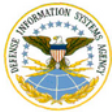Defense Spectrum Organization explores innovations in spectrum sharing, data visualization
 The demand for electromagnetic spectrum (EMS) access is increasing. In order to satisfy the warfighters’ spectrum needs, the Defense Information Systems Agency’s Defense Spectrum Organization (DSO) is looking at innovative solutions to spectrum sharing, the agency announced June 13.
The demand for electromagnetic spectrum (EMS) access is increasing. In order to satisfy the warfighters’ spectrum needs, the Defense Information Systems Agency’s Defense Spectrum Organization (DSO) is looking at innovative solutions to spectrum sharing, the agency announced June 13.
DSO representatives presented challenges and the way ahead during a panel discussion at the Armed Forces Communications and Electronics Association’s Defensive Cyber Operations Symposium in Baltimore last month.
The DSO develops and implements net-centric enterprise spectrum management capabilities to enhance efficiency and effectiveness. It also pursues emerging spectrum technologies that may positively or negatively affect the Department of Defense’s (DOD) ability to access the electromagnetic spectrum.
Today’s modern battlespace requires spectrum management to be as agile as the warfighters who rely on it. From fighter aircraft to infantrymen on the ground, EMS influences every facet of combat connectivity.
“Every single system on the battlefield is reliant on the electromagnetic spectrum,” said DISA’s DSO Technical Director Bob Schneider.
EMS is facing challenges because the information battlespace is under siege by the “Big Cs.” It is congested – there are numerous users; it is contested – adversaries are causing challenges for our warfighters through their jamming ability; and it is constrained – there are regulatory and policy constraints on how the DOD accesses the spectrum domestically and overseas.
Electromagnetic spectrum is needed to address maneuverability, situational awareness, spectrum visualization, and spectrum sharing.
According to Gregory Wagner, chief of DSO’s Strategic Planning Office, in 2013, the DOD published an Electromagnetic Spectrum Strategy to continue dialog regarding spectrum sharing as a way to increase the government’s access to spectrum. Titled, “A Call to Action,” the strategy presents a framework for how the DOD should rapidly adapt to the changing spectrum environment and to assess and respond to spectrum regulatory changes.
“The demand signal says we are going to have to do more and more of this (spectrum sharing),” said Wagner. “We need to drive the time scales from the manual to the automated (and) from the calendar to the machine.”
EMS transformations are being made within the marketplace and industry, and it will affect the government.
“We will have to adapt to these transformations in order to succeed,” Wagner said.
According to Wagner, the data needed yesterday is not the data needed tomorrow for spectrum sharing.
“We have a data challenge,” said Wagner. “We perceive the need for data analytics in this space.”
Technique changes will be required to address the how spectrum can be shared and for how long. This, in turn, will determine the warfighters’ lethality in both kinetic and non-kinetic battlespaces.
A key enabler of spectrum sharing is being able to understand the consequences of interference among different spectrum using systems. Data visualization, automation, and algorithms are the building blocks to understanding.
Algorithms turn raw data into actionable information that can be used to make decisions.
“DSO has a number of efforts in progress to innovate and create new algorithms,” said Stuart Schutta, an electronics engineer from DSO. “One algorithm is (designed)] to help us understand interference in the aggregate.”
Spectrum sharing in the 1755-1780 megahertz band is where DOD relocates its systems. There are thousands of cellphones transmitting in this band, and DOD systems are being affected by those transmissions. DSO developed a new algorithm to calculate the statistics of this aggregate interference, enabling them to make informed decisions regarding spectrum sharing.
According to Schutta, DSO’s algorithm uses advanced principles from statistics to combine raw statistical information to determine statistical distributions from which risk-based decisions are made about spectrum sharing, how to use it, and how to share with cellular systems.
“This algorithm gives us higher fidelity views into the impacts interference is having on our systems. We are looking at how to expand this beyond …the spectrum sharing scenario, where we have had great success thus far. We’re also looking at how to apply it in other scenarios for warfighting and EMS maneuvers, said Schutta.”
Almost every DOD system has some dependence on spectrum; therefore, it is increasingly important for warfighters to be able to optimize their use of the spectrum. Big data analytics can be useful in the spectrum domain. Spectrum data runs the gamut from highly specified measured data to documentation. For example, regulatory data defines the operating parameters and constraints of the systems, including frequency assignments or reservations for a given system in a specific location, equipment characteristics, and real-time position/emitter information.
Interference is a major concern within the EMS.
“This is really a ripe area for (the) application of analytics to be able to predict and assess whether interference is intentional or unintentional,” said Elizabeth Park, an electronics engineer from DSO. “We need to know the time and place that an interference occurs.”
Big data analytics look at velocity, volume, variety, and veracity. Velocity is how the data changes. Volume is quantity or the size of the data set. It is measured in gigabytes, but is growing quickly with the evolution of streaming and sensor data. The variety of data may be structured, unstructured or semi-structured. Veracity is the uncertainty of the data.
Other types of data include modeling and simulation data, which consists of detailed antennae patterns, propagation loss overlays, contours of terrain and urban environments; and environmental data that describes atmospheric and weather conditions that affect spectrum.
“One of the biggest problems with spectrum data is there is a lot of ambiguity in the structure and the values. We are looking toward machine learning to help make sense of our data and correct it,” said Park.
DSO recognizes that without innovative visualization capabilities, it will be difficult for warfighters to make sense of all of the data needed to make informed decisions. EMS operators and planners make decisions based on regulations, engineering analysis, equipment characteristics, frequency assignments, and other information.
“We experiencing higher demands for spectrum (and) operating more sophisticated systems in an increasingly congested, contested, and constrained environment,” said DSO International Team Lead Edward Rocksvold. “And, we are facing a more sophisticated adversary.”
Spectrum data visualization is a key component to inform DOD planning and EMS command and control decisions.
“(Electromagnetic spectrum) is more than what you see, it is how you visualize it. Improved visualization brings data together in a meaningful way,” said Rocksvold. “The right visualization capability can help planners and operators understand the more complex electromagnetic spectrum environment.”
Spectrum visualization must improve in order for EMS situational awareness to improve.
“The path to innovation involves exploring 3D gaming technology, which will significantly advance spectrum data visualization, line-of-sight analysis, fly through coverage plots, and node connectivity diagrams,” said Rocksvold. “We are leveraging commercial industry solutions to explore the art of the possible with the goal of providing improved spectrum data visualization capabilities to support strategic and operational spectrum management decision making.”
Source: DISA







